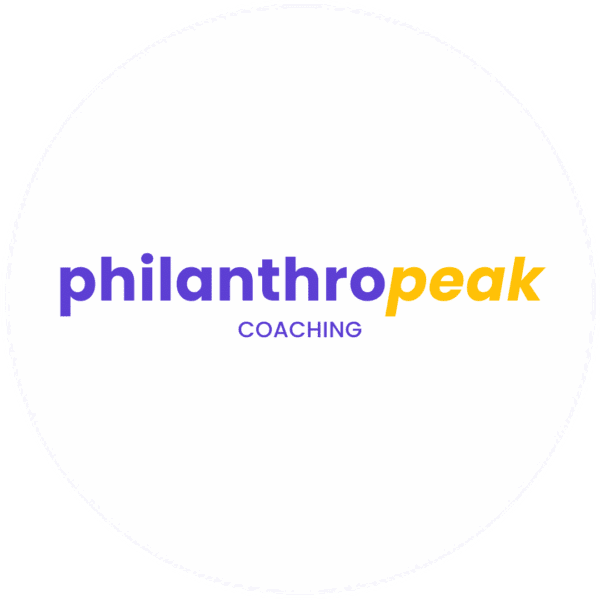
Understanding ADHD Hyperfixation: Navigating the Depths of Intense Focus
Table of Contents
ToggleEver been so wrapped up in something that the world just slips away? That’s hyperfixation for you, a common thing with ADHD folks. It can be a bit of a mixed bag. On one hand, it lets you dive deep into stuff, but on the other, it might mean forgetting to do the dishes or call your mum back. This article will break down what ADHD hyperfixation is all about, its ups and downs, and how to use it to your advantage.
Key Takeaways
- ADHD hyperfixation can lead to incredible focus but might cause you to overlook other important tasks.
- Balancing this intense focus with everyday life needs some clever strategies and a bit of planning.
- By recognising patterns and triggers, you can turn hyperfixation into a tool for productivity and creativity.
The Science Behind ADHD Hyperfixation

Understanding Dopamine's Role
When it comes to ADHD and hyperfixation, dopamine is like the main character in a drama. People with ADHD often have lower levels of this neurotransmitter, which is crucial for motivation and pleasure. Think of dopamine as the brain’s way of saying, "Hey, this is exciting!" When someone with ADHD stumbles upon something captivating, their brain releases a surge of dopamine. This rush creates a feeling of excitement and focus that’s often absent in other tasks. This dopamine surge is what makes hyperfixation both fascinating and tricky. It’s like being on a thrilling rollercoaster—exciting but sometimes hard to step off.
Neurobiological Pathways and Focus
The brain of someone with ADHD is wired a bit differently. Neurobiological studies suggest that certain brain pathways might contribute to hyperfixation. For instance, the prefrontal cortex, which is responsible for decision-making and impulse control, often functions differently. This can lead to a kind of tunnel vision, where the person becomes intensely focused on a single task or interest. While this can lead to great productivity in areas of interest, it can also mean neglecting other important tasks.
Understanding the brain’s wiring can help us appreciate the unique cognitive processes in ADHD. It’s not just about challenges; it’s also about recognising the strengths that come with this intense focus.
Cognitive Impacts of Hyperfixation
Hyperfixation can significantly affect cognitive functions. On one hand, it allows for deep concentration and mastery of specific skills or knowledge. On the other, it might lead to difficulties in task-switching or managing time effectively. People with ADHD might find themselves losing track of time during these episodes, which can disrupt daily life. It’s like being in a time warp where hours can pass by unnoticed. Recognising these patterns can help in developing strategies to manage time better and ensure a balanced approach to both personal and professional responsibilities.
For those interested in exploring how mindfulness can aid in managing ADHD, consider exploring mindfulness practises that enhance wellbeing and balance.
Navigating the Challenges of ADHD Hyperfixation

Balancing Intense Focus with Daily Life
Living with ADHD often means experiencing intense periods of hyperfixation, where you become so absorbed in something that everything else fades away. This can be both a gift and a curse. On one hand, it allows for incredible focus and productivity. On the other, it might mean neglecting basic daily tasks like eating or sleeping. Finding a balance is crucial. Here’s how you can manage:
- Set Time Limits: Use timers or alarms to remind yourself to take breaks and switch tasks.
- Prioritise Responsibilities: Make a list of essential daily tasks and tackle them before diving into your hyperfixation.
- Schedule Breaks: Regular intervals can help maintain overall productivity and prevent burnout.
Strategies for Managing Hyperfixation
Managing hyperfixation requires more than just willpower; it involves a set of strategies tailored to your lifestyle. Here are some tried-and-true methods:
- Create a Routine: Having a structured daily schedule can help you move smoothly through different responsibilities.
- Utilise Mindfulness Techniques: Practising mindfulness can increase your self-awareness, helping you recognise when hyperfixation is taking over.
- Employ ADHD-Specific Tools: Techniques like the Pomodoro Technique can break tasks into shorter, focused intervals, making them more manageable.
Hyperfixation can be both a challenge and an asset. Recognising its impact on your life is the first step towards harnessing it effectively.
Recognising Triggers and Patterns
Understanding what triggers your hyperfixation can be a game-changer. By identifying these patterns, you can plan your activities around them, maximising productivity. Here’s what you can do:
- Keep a Journal: Document your daily activities and note when hyperfixation occurs to identify triggers.
- Reflect on Your Day: Spend a few minutes each evening thinking about what led to periods of intense focus.
- Adjust Your Environment: Modify your workspace to reduce distractions and support your focus.
Navigating the challenges of hyperfixation involves recognising its impact on daily life and employing strategies to manage it effectively. With the right tools and mindset, you can turn this intense focus into a strength rather than a stumbling block.
Harnessing ADHD Hyperfixation as a Strength

ADHD hyperfixation, often seen as a hurdle, can be a real game-changer when channelled correctly. Imagine diving so deep into a task that hours fly by unnoticed. That’s hyperfixation for you. But the trick is to harness this intense focus and turn it into something productive. Here’s how:
- Set Clear Goals: Break tasks into smaller, manageable chunks. This way, you can track progress without feeling overwhelmed.
- Time Management: Use timers or apps to schedule focused work sessions. It helps keep track of time, preventing burnout.
- Prioritise Tasks: Focus on what’s crucial first. This ensures that your energy is spent on tasks that matter most.
Hyperfixation can be a superpower if used wisely. The key is to balance intense focus with regular breaks to maintain overall productivity.
Hyperfixation isn’t just about getting things done; it’s also about creativity. When your mind is locked onto something, it can unlock a world of creative possibilities. Here’s how to make the most of it:
- Embrace Passion Projects: Dive into projects that ignite your passion. This not only fuels creativity but also leads to innovative outcomes.
- Explore New Ideas: Use hyperfixation to explore new concepts or hobbies. It’s a great way to expand your creative horizons.
- Collaborate with Others: Share your intense focus with a team. Working with others can lead to unexpected creative breakthroughs.
Many successful creatives have used hyperfixation to their advantage, producing work that stands out for its originality and depth.
Hyperfixation can also be a tool for building resilience. By focusing intensely on tasks, you develop skills that can help you bounce back from setbacks. Here’s how to use hyperfixation to build resilience:
- Learn from Mistakes: Use your focus to analyse what went wrong and how to improve.
- Stay Persistent: Hyperfixation can help you stay committed to long-term goals, even when challenges arise.
- Adapt to Change: The ability to focus deeply can also help you adapt to new situations, making you more resilient in the face of change.
By recognising the potential of hyperfixation, individuals with ADHD can transform challenges into strengths, leading to personal and professional growth.
The Social and Emotional Dimensions of ADHD Hyperfixation

Impact on Relationships
Hyperfixation in ADHD can be a tricky thing for relationships. Imagine being so caught up in a project or interest that you forget about everything else, even the people you care about. This can lead to misunderstandings and feelings of neglect among friends and family. But here’s the flip side—when channelled positively, this intense focus can also bring passion and dedication to relationships, making them richer and more meaningful.
Emotional Regulation Strategies
Handling emotions during hyperfixation episodes can be tough. One minute you’re on top of the world, and the next, you’re frustrated because of an interruption. Try these practical strategies to keep emotions in check:
- Mindfulness Practises: Activities like meditation or deep breathing can help keep you grounded.
- Scheduled Breaks: Set alarms to remind yourself to take breaks and check in with your feelings.
- Journaling: Write down your thoughts and emotions to process them better.
These techniques can help maintain emotional balance and prevent the overwhelm that often comes with hyperfixation.
Fostering Supportive Environments
Creating a supportive environment for someone with ADHD is all about understanding and patience. Open communication is key. Here are some ways to create a supportive setting:
- Open Dialogue: Encourage discussions about how hyperfixation affects daily life and relationships.
- Setting Boundaries: Help set clear boundaries to ensure that hyperfixation doesn’t lead to burnout.
- Community Support: Engage in support groups or communities that understand ADHD challenges.
Such environments not only help manage hyperfixation but also promote a sense of belonging and acceptance.
Understanding the social and emotional dimensions of hyperfixation can transform challenges into opportunities for growth and connection.
Hyperfixation can deeply affect how we feel and connect with others. It can lead to intense focus on specific interests, which might make it hard to engage in social situations. If you or someone you know is navigating these feelings, consider exploring our resources. Visit our website to learn more about how ADHD clarity coaching can help you manage these challenges and unlock your potential!
Understanding the social and emotional aspects of ADHD hyperfixation is crucial for those affected. It can lead to intense focus on specific interests, but it may also create challenges in relationships and daily life. If you or someone you know is navigating these complexities, visit our website for expert guidance and support tailored to your needs. Let’s work together to harness the power of ADHD!
Conclusion
So, there you have it. Hyperfixation in ADHD is a bit of a double-edged sword. On one hand, it can lead to amazing focus and productivity when you’re really into something. But on the flip side, it can also mean losing track of time and neglecting other important stuff. It’s all about finding that balance, right? Understanding how hyperfixation works can help you manage it better, making sure it becomes a strength rather than a stumbling block. Whether it’s setting timers or taking regular breaks, little tweaks can make a big difference. And remember, it’s okay to ask for help or try out different strategies until you find what works best for you. At the end of the day, embracing your unique way of thinking can turn challenges into opportunities. So, keep exploring, keep learning, and most importantly, keep being you.
Frequently Asked Questions
What is ADHD hyperfixation?
ADHD hyperfixation is when a person becomes so absorbed in an activity or interest that they lose track of time and ignore other tasks. It can feel like being in a bubble where only that one thing matters.
How does hyperfixation differ from hyperfocus?
Hyperfixation involves being completely engrossed in something, often to the point of neglecting other responsibilities. Hyperfocus is similar but usually relates to a heightened state of attention that can be productive and doesn’t always lead to neglect.
Can hyperfixation be harmful?
Yes, hyperfixation can be harmful if it causes someone to ignore important tasks or responsibilities, leading to stress or problems in personal relationships.



